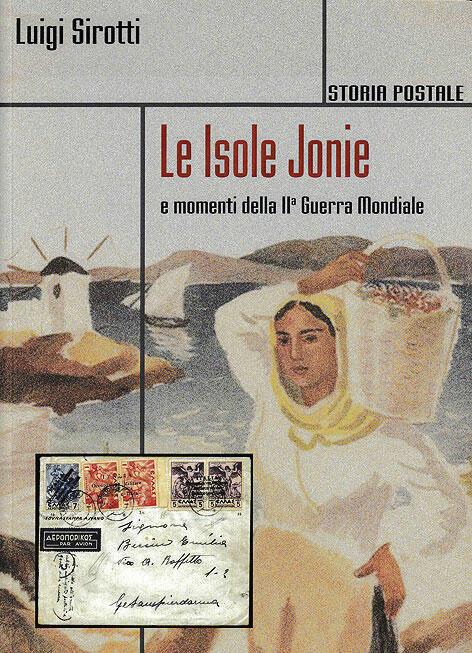
2 minute read
by Giorgio Migliavacca
Traditionally called the Heptanese (Seven) Islands (including many smaller islands), the Ionian Islands were occupied by Italy on April 28, 1941, after the German occupation of Greece. In 1943, the Germans replaced the Italians and deported the centuries-old Jewish community of Corfu to their deaths. By 1944, most of the islands were under the control of the EAM/ ELAS resistance movement, and they have remained, in general, a stronghold of left-wing sentiment ever since. Sirott i devotes several pages to the various phases of the Italian occupation and, from the very start, he keeps his eyes on postal communications and military, political and postal developments.
A chapter is devoted entirely to the hand-stamped and lett erpress overprints with a wealth of illustrations, including censor marks and censor labels. We are informed by Sirott i that “during the Italian and German occupations, as evinced by careful examination of the frankings, the tariff s underwent numerous changes whilst some accessory services were discontinued.”
Advertisement
During the early period of occupation, Greek postal stationery franked with Greek stamps with Italian occupation overprints were used; meanwhile, in early June 1941, a civilian censor offi ce was activated at Corfu by Italian authorities for the purpose of censoring all domestic and foreign-bound mail of the occupied islands; it also operated as a gathering and sorting center facilitating mail exchange with various European countries. All related censor labels and censor marks are illustrated and discussed in great detail.
More space is given to the Cefalonia and Itaca overprints and their rarity when used on mail to Italy and Greece. The use of non-overprinted Greek stamps from Corfu to Italy and Greece and related level of rarity is neatly presented in a chart.
As Italy occupied Zakintos (Zante), it began to hand overprint Greek stamps with the boxed, four lines, “OCCUPAZIONE MILITARE DI ZANTE 1-5-XIX.” From April to August 1941, the Zante post offi ce also handled mail from Italian troops deployed in the seven Ionian Islands.
The use of stamps with the boxed four-line overprint on Greek stamps on mail to Italy and Greece and related level of rarity is neatly presented in a chart. The subject matt er is discussed in great detail in the ensuing pages.
The technical details and complexities of the Argostoli overprint with movable fonts, beginning with the May to September 1941 use on Greece postal stationery processed by the Italian fi eld post offi ce is examined in its four distinctive types.

378 November-December 2022 www.collectorsclub.org










